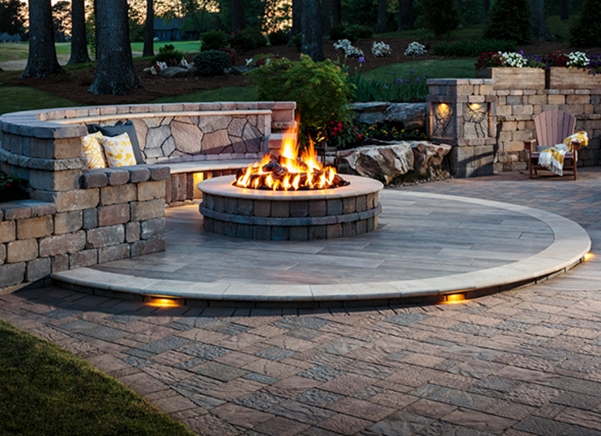Basic lighting is a necessity for most outdoor projects like decks, patios and kitchens. However, lighting can be so much more! When outdoor light placement is implemented strategically and creatively, it is an economical way to take your client’s space to the next level and also extend the amount of time they can enjoy the space well past sundown.
. . .
The Benefits of Outdoor Lighting
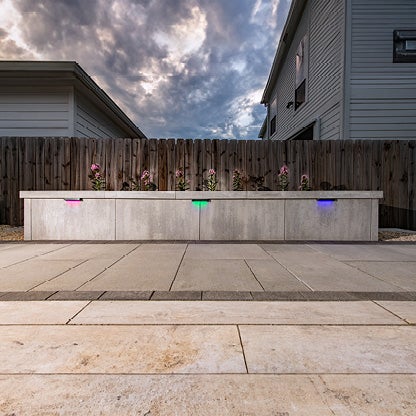
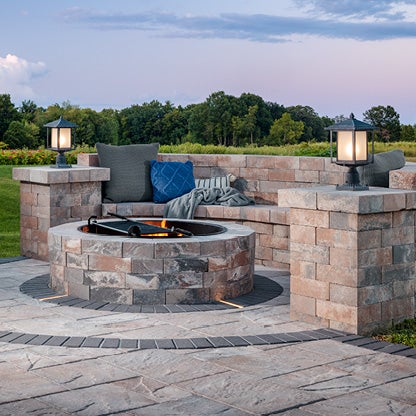
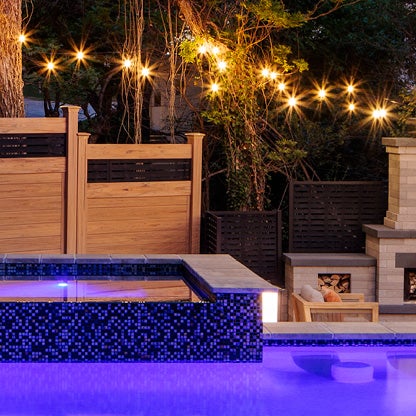
When it comes to outdoor lighting, there are practical benefits and magical benefits. Practical considerations include security, as nighttime lighting may deter potential intruders. Many homeowners use a dusk-to-dawn security light to illuminate entryways throughout the night. Others use a motion sensor switch to trigger the light when something or someone moves nearby. Safety is another practical use of lighting where it can help prevent accidents and injuries by shining a light on potential hazards like step-downs, stairs and uneven ground. Security and safety factors become even more important as the days get shorter in fall and winter, and more light is needed.
From a magical standpoint, lighting is a terrific way to increase curb appeal with lighted landscaping, flower beds and pathways. For illuminating outdoor areas, such as patios and decks, overhead lighting that can be dimmed, depending upon the atmosphere one’s looking to create, can be installed. Lighting is also a way to highlight unique landscaping features like trees, fountains, statuary or walls. Well-placed outdoor lighting is a decorating feature unto itself and can be used to create the perfect look.
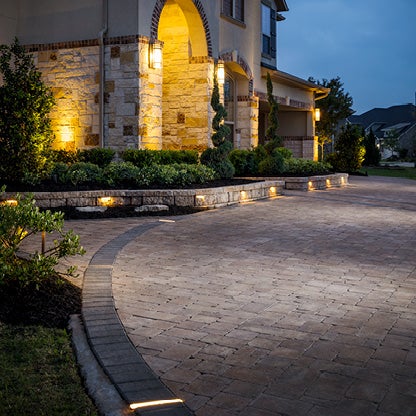
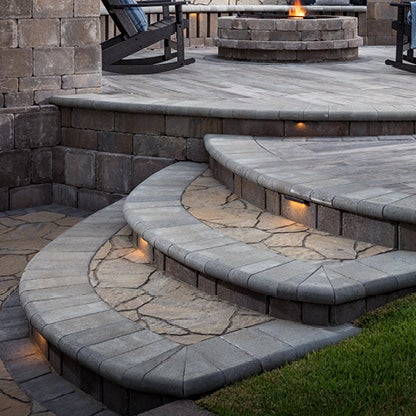
What Colors are Better for Outdoor Lighting and Why?
Clients often wonder what’s the best outdoor lighting color. That answer depends upon the goal of the lighting. Bluer, cool white lighting is best if you’re looking to highlight a nighttime accent on a property. This color provides a more natural look, such as the light coming from the moon. On the other hand, warm white lights don’t blend in with the natural moonlight, so this works best when the goal is to draw attention or make the area more visible, perhaps for security.
The following is a guideline for three temperatures of lights
4000K Cool White: Lighting with a 4000K temperature is the coolest white you can get and the best option for dusk-to-dawn security or motion sensor flood lights.
3000K Natural White: 3000K natural white lights highlight the greenery in lawns and is most preferred by professional landscape designers.
2700K Warm White: The 2700K warm white light color creates a peaceful, romantic feel. This temperature is popular in wall sconces, entry lights and overhead lighting to create a beautiful ambiance without being too harsh.
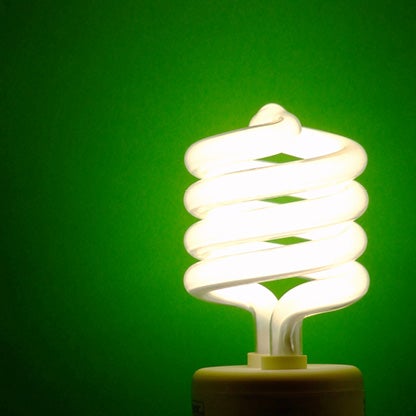
Lumens vs Watts in Outdoor Lighting
Clients may also be curious as to what is the best lumens for outdoor lighting or the best wattage for outdoor lighting. Here’s a good explanation.
There has been a shift in recent years to move away from using wattage as a means of measuring the brightness of a bulb. It’s important to understand that watts are not actually a measure of light output, but a measure of how much energy a light source is consuming. The unit of measurement to determine how much light a bulb emits is called lumens. New LED bulbs use less energy and will have a lower wattage but may be higher in lumens and brighter. On most packaging, you’ll see the number of lumens produced, as well as the wattage of the bulb. Compare the lumen numbers to see if the lightbulbs will give off a similar amount of light, then look at the wattage requirements to see how much energy each bulb will use. To choose the most energy-efficient bulb, find ones that have the light output that you need, then choose the one that has the lowest wattage.
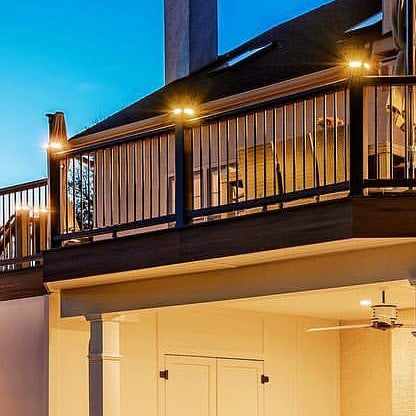
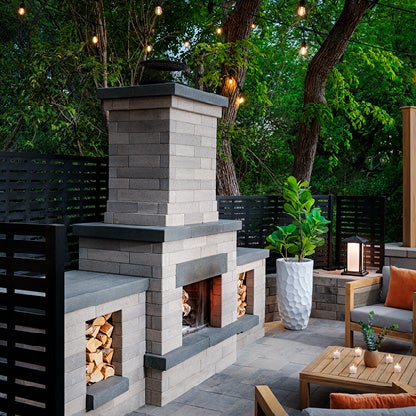
Planning Outdoor Lighting
Spring and fall are both great times to implement outdoor lighting. During spring, the weather is warming, and potential clients are turning their attention to spending more time outdoors with friends and family during the summer. Fall is another great time to install lighting as days get shorter, and it’s well before the freezing temperatures set in.
Planning for lighting installations starts with listening to your clients’ goals. Are they looking to improve safety and security, highlight architectural features, create ambiance, or a mixture of each?
Belgard has a variety of light options for any need.
- Outdoor LED Pathway Lights, Paver Walkway LED Lights and LED Step Riser Lights are all good options to illuminate walkways for safety.
- Spotlights and Accent Lighting can be used to focus on architectural features, trees, walls, and fountains.
- LED Post Cap Lighting, Lights for Pillars and Columns, and LED Hardscape Lights can all be used as practical illumination while also adding dramatic focal points to an outdoor living area.
- Finally, Bistro Lights, Ceiling and Pendant Lights and Sconce Lighting can enhance the look of a space and add to the overall ambiance.
Remember, installing dimmer switches to these types of lighting offers the homeowner more control, as they can brighten the lighting for cooking, or dim it for a more atmospheric mood while entertaining guests.
Your business may be in an area that has mandated a “dark sky” ordinance to control “light pollution.” Some of Belgard’s lighting can be used to focus light directly to the ground along with using lower lumen bulbs, both of which can help comply with any ordinances. If clients have room, don’t hesitate in suggesting a fire pit or fireplace that not only adds light, but also warmth and a natural coziness to cool autumn nights.
With these helpful action items to wrap up your project, we hope you will enjoy your new hardscape for years to come.
When you’re creating a newly built outdoor space, be sure to utilize lighting to meet your client’s needs and enhance the livability of the area. In addition, don’t forget that older outdoor spaces, such as patios, decks and kitchens, can be upgraded with newer, modern lighting to provide a more dramatic look and feel. You’ve got the power to brighten someone’s outlook, so lighten things up!
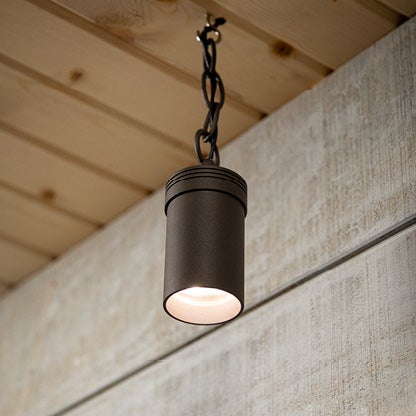
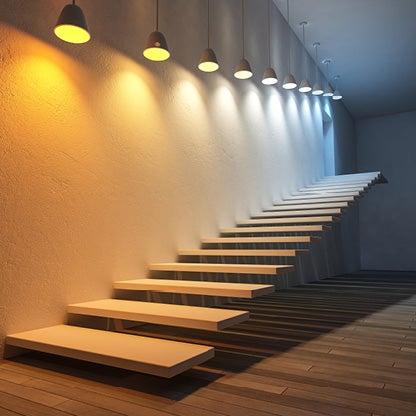
. . .
For more information on planning your project, visit our outdoor planning page.


